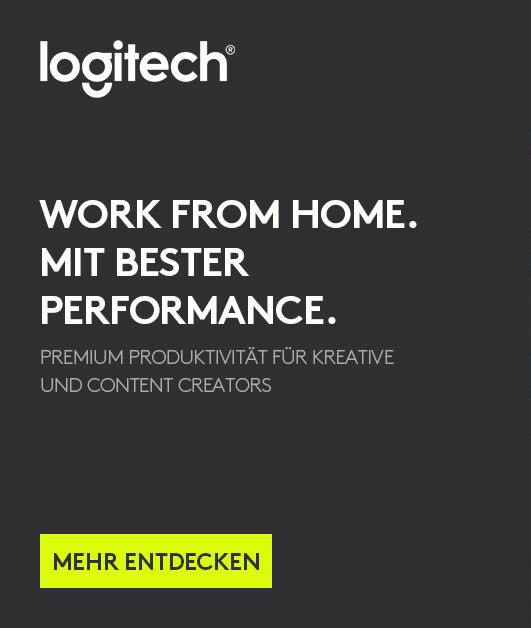Update for Zoom Contact Center
New or enhanced feature
Admin features
Zoom Contact Center CX analytics localization
- Account owners and admins can view the CX analytics reports in their preferred language. Localization support includes dataset names, report descriptions, metric names, and metric descriptions, all automatically aligned with the selected language in the Zoom web portal. Queue names and agent names will continue to display in their originally entered language to maintain consistency and clarity. This enhancement significantly improves report accessibility and usability for users across diverse language preferences.
Voicemail recording and transcript download tracking
- Account owners and admins can track when users download voicemail recordings and transcripts in Zoom Contact Center's operational logs. The logs capture essential details including timestamp, operator information, customer name, recording UUID, and file type. The enhanced audit trail includes both web portal and desktop app downloads.
Transfer and conference policies for voice queues
- Account owners and admins can set queue-level policies to allow only warm transfers, only direct transfers, or both. When only one option is enabled, agents will bypass the transfer type selection screen, reducing clicks and simplifying the workflow. The same policy control applies to conference actions. This feature helps enforce consistent agent behavior and improves efficiency during customer interactions.
Support for JSON and Array system global variable types
- Account owners and admins can create and manage JSON and array variable types in the global variable management page. The system supports JSON variables up to 5 KB (approximately 1,000 characters) and arrays with a maximum of 50 items. These variables can be referenced in Send Media and Collect Input widgets, with the ability to access specific fields (for JSON) or indices (for arrays) for mapping. Variables can also be used in reporting and support both undefined and default values.
Singapore available as a storage location for messaging and email transcripts
- Account owners and admins can now select Singapore as the storage location for chat and email transcripts. When enabled, this setting applies organization-wide to all messaging and email communications.
Queue data retrieval with variable-based queue names
- Account owners and admins can use variables to dynamically set queue names when retrieving queue data in flows. This enhancement supports dynamic queue name lookup within the Condition widget's Get Queue Data option, maintaining access to all existing queue metrics. The feature eliminates the need for complex script-based functions and OAuth-based API calls to obtain queue metrics. This enables more flexible and efficient flow configurations for contact centers that require dynamic queue handling.
Enhanced Agent-to-Queue transfer experience with default skill routing
- Account owners and admins can configure default skill combinations for queues, which are automatically applied when agents transfer calls. This eliminates the need for agents to manually select skills during a transfer, helping reduce handling time and minimize routing errors. When default skills are enabled, agents see a simplified transfer interface that displays the target queue name with default skills selected, and an optional note field. Admins can select whether agents must select skills manually during transfers or allow the system to apply default skills automatically.
Email template builder
- Account owners and admins can create and customize system asset email templates for outbound communications using system email assets. Agent saved replies currently will not support new email template builder. The builder provides options to modify headers, fonts, colors, logos, and footers to match brand styling. Admins can select from four pre-built templates for video invites, support, order updates, troubleshooting, and promotional offers using system email assets. The feature is available to Essentials, Premium or Elite subscriptions and does not require channel enablement. This enhancement helps enterprises maintain consistent branding across all customer email communications.
Agent activity logs in CX Analytics
- Supervisors and admins can access detailed agent activity logs in Zoom Contact Center CX Analytics reports. These logs include agent status transitions ( Ready , Not Ready , Occupied ) with precise timestamps along with agent details like email, team, session ID, and queue information. Any time the agent is occupied, the Engagement ID can be displayed by adding it to the log. Users can also filter, sort, customize views, and export data for deeper analysis. This feature enables effective tracking of agent activities, adherence, and queue participation.
Ability to create event automation for outbound engagements
- Account owners and admins can create and manage event automation for outbound engagements across voice, video, messaging, and email channels, enabling organizations to automate actions based on outbound call events. Admins will be able to configure scripts for key engagement events (e.g., start, end, connected, transferred) for outbound engagements. This feature must be enabled by Zoom.
Enhancements to top engagement escalation
- Account owners and admins can access an improved engagement escalation system with additional new factors like interruptions, hold times, and number of transfers. The system uses an AI powered algorithm to identify high-risk engagements, flagging those with aggressive language or challenging topics along with a set of different factors. Admins can further customize triggers using Zoom Contact Center (ZCC) variables or address book custom fields. Admins can also add agents to watch list.
Note: Engagements are escalated when multiple factors occur together. One trigger alone, such as a ZCC variable or a long engagement duration, is not enough to flag an engagement. This feature must be enabled by Zoom.
Enhancements to chat engagement window header
- Account owners and admins can select a new Full Header image option when configuring chat engagement window headers. This option allows header images to span the entire header space without additional padding, while navigation icons appear overlaid on top of the image. The header image scales proportionally on mobile devices to maintain visual consistency across different screen sizes. This enhancement helps create a more professional brand presence in web chat interactions.
Teams management in Zoom Contact Center
- Account owners and admins can set up a teams hierarchy within a single account or within many divisions. The team structure shows the total number of agents across parent and child teams, and users can be assigned to multiple teams with different personas (agent, supervisor, or both). This enables the ability to report based on teams, control data scope and visibility by team and allow supervisors to see child team data. This feature must be enabled by Zoom.
Agent and consumer features
SMS failure tracking and retry option
- Agents and supervisors can view SMS delivery failure statuses and reasons directly within the Zoom Workplace desktop app, Zoom Web App, and CTI interfaces. When an SMS fails to deliver, the system displays the failure status along with the specific reason, and logs the event in transcripts and engagement logs. A new engagement event also tracks SMS delivery failures. To help ensure important messages reach consumers, agents and supervisors can retry sending failed SMS messages. The original failed message remains visible for reference, and a retry option allows agents to resend the exact same message content.
Note: This feature will not be immediately available, as it is dependent on the client release currently scheduled for August 18, 2025
File sharing in Zoom Team Chat
- Users engaging with IT helpdesks through Zoom Team Chat can now transfer local files to support agents. The file sharing icon becomes visible once a live agent takes over the engagement, allowing users to upload files directly within the chat window. File size and type restrictions follow the same guidelines as web chat channel, and admins can configure additional file type restrictions in Zoom Contact Center preferences. This feature enables faster issue resolution by allowing direct file sharing between users and support agents.
Note: This feature will not be immediately available, as it is dependent on the client release currently scheduled for August 18, 2025
Engagement status for virtual agent interactions
- Supervisors can view when engagements are actively being handled by virtual agents in the Open Engagements tab and CX Analytics engagement list. The system displays Virtual Agent status for these engagements, distinguishing them from regular flow engagements. The engagement status timer resets when an engagement transitions to or from a virtual agent. This enhancement helps supervisors better monitor and understand the consumer journey during virtual agent interactions.
Note: This feature will not be immediately available, as it is dependent on the client release currently scheduled for August 18, 2025
Seamless video escalation for Zoom Phone users in Zoom Contact Center
- Consumers on a Zoom Phone call with a Zoom Contact Center agent can now switch to a video call instantly. There is no need for email links or extra downloads. Joining is as simple as clicking the upgrade-to-video invite from the Zoom Contact Center agent. Once connected, consumers have access to all standard Zoom Contact Center video features, including mute, video controls, chat, screen sharing, and remote control, enabling faster collaboration and support. This feature must be enabled by Zoom.
AI Expert Assist for video channels in CTI connector
- Agents can now use AI Expert Assist during video engagements within the CTI connector, gaining access to features like auto-disposition and smart notes. Admins can configure AI Expert Assist settings specifically for video queues, helping maintain consistent support across channels. With this enhancement, agents can deliver faster, more efficient service throughout the entire customer journey.
Changed feature
Admin features
Video join link as global variable
- Account owners and admins can now insert the video join link as a global variable within the asset library. This enables full customization in the new email template builder, allowing admins to define exactly where the video join link appears in a video invitation. Previously, the video join link was automatically appended to the end of the email. With this enhancement, that limitation is removed, giving teams greater flexibility and control over their email layout and messaging.
Extended callback task timeout duration for voice and video queues
- Admins can now configure callback task timeouts for voice and video queue callbacks from 1 hour up to 7 days. This extends the previous 3-day limit, providing greater flexibility to align callback expiration with business calendars, staffing models, and customer expectations. This feature must be enabled by Zoom.
Enhancements to waiting experience for voice queue transfers
- Account owners and admins can provide callers with interactive menu options during voice queue transfers in Zoom Contact Center. Previously, callers who were direct transferred to another queue would only hear an audio file without any ability to interact with the system during wait times. With this enhancement, admins can configure the receiving queue to offer the same interactive experience as direct queue routing, including options for callbacks, voicemails, or transfers to other flows through digit keypresses. This feature must be enabled by Zoom.


